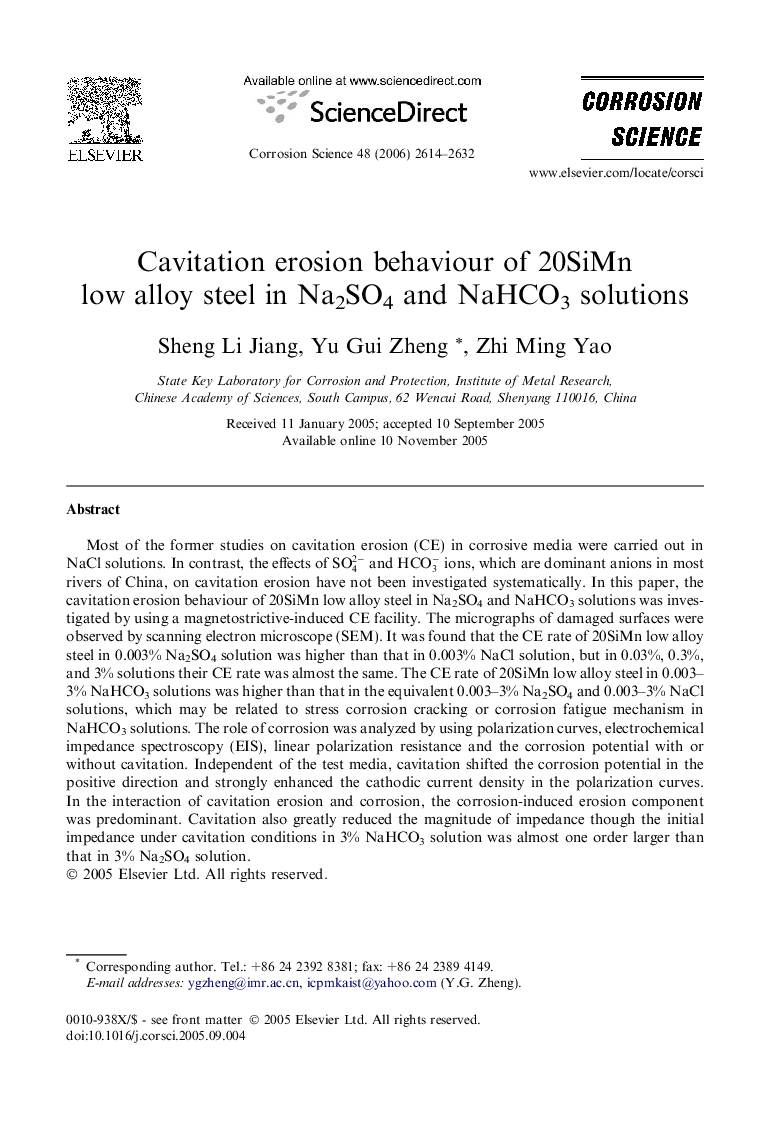| Article ID | Journal | Published Year | Pages | File Type |
|---|---|---|---|---|
| 1472241 | Corrosion Science | 2006 | 19 Pages |
Most of the former studies on cavitation erosion (CE) in corrosive media were carried out in NaCl solutions. In contrast, the effects of SO42- and HCO3- ions, which are dominant anions in most rivers of China, on cavitation erosion have not been investigated systematically. In this paper, the cavitation erosion behaviour of 20SiMn low alloy steel in Na2SO4 and NaHCO3 solutions was investigated by using a magnetostrictive-induced CE facility. The micrographs of damaged surfaces were observed by scanning electron microscope (SEM). It was found that the CE rate of 20SiMn low alloy steel in 0.003% Na2SO4 solution was higher than that in 0.003% NaCl solution, but in 0.03%, 0.3%, and 3% solutions their CE rate was almost the same. The CE rate of 20SiMn low alloy steel in 0.003–3% NaHCO3 solutions was higher than that in the equivalent 0.003–3% Na2SO4 and 0.003–3% NaCl solutions, which may be related to stress corrosion cracking or corrosion fatigue mechanism in NaHCO3 solutions. The role of corrosion was analyzed by using polarization curves, electrochemical impedance spectroscopy (EIS), linear polarization resistance and the corrosion potential with or without cavitation. Independent of the test media, cavitation shifted the corrosion potential in the positive direction and strongly enhanced the cathodic current density in the polarization curves. In the interaction of cavitation erosion and corrosion, the corrosion-induced erosion component was predominant. Cavitation also greatly reduced the magnitude of impedance though the initial impedance under cavitation conditions in 3% NaHCO3 solution was almost one order larger than that in 3% Na2SO4 solution.
